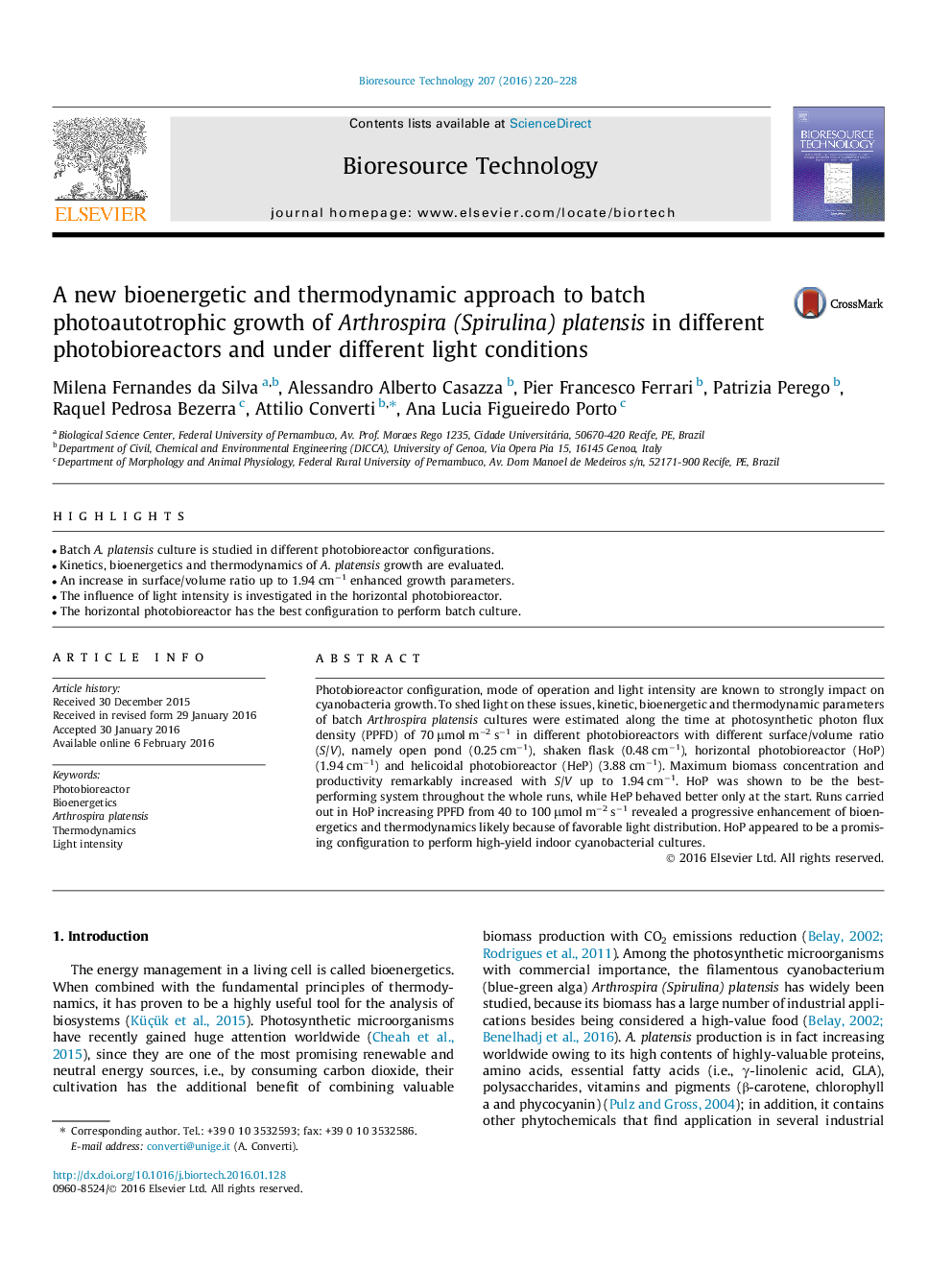| Article ID | Journal | Published Year | Pages | File Type |
|---|---|---|---|---|
| 7072308 | Bioresource Technology | 2016 | 9 Pages |
Abstract
Photobioreactor configuration, mode of operation and light intensity are known to strongly impact on cyanobacteria growth. To shed light on these issues, kinetic, bioenergetic and thermodynamic parameters of batch Arthrospira platensis cultures were estimated along the time at photosynthetic photon flux density (PPFD) of 70 μmol mâ2 sâ1 in different photobioreactors with different surface/volume ratio (S/V), namely open pond (0.25 cmâ1), shaken flask (0.48 cmâ1), horizontal photobioreactor (HoP) (1.94 cmâ1) and helicoidal photobioreactor (HeP) (3.88 cmâ1). Maximum biomass concentration and productivity remarkably increased with S/V up to 1.94 cmâ1. HoP was shown to be the best-performing system throughout the whole runs, while HeP behaved better only at the start. Runs carried out in HoP increasing PPFD from 40 to 100 μmol mâ2 sâ1 revealed a progressive enhancement of bioenergetics and thermodynamics likely because of favorable light distribution. HoP appeared to be a promising configuration to perform high-yield indoor cyanobacterial cultures.
Related Topics
Physical Sciences and Engineering
Chemical Engineering
Process Chemistry and Technology
Authors
Milena Fernandes da Silva, Alessandro Alberto Casazza, Pier Francesco Ferrari, Patrizia Perego, Raquel Pedrosa Bezerra, Attilio Converti, Ana Lucia Figueiredo Porto,
